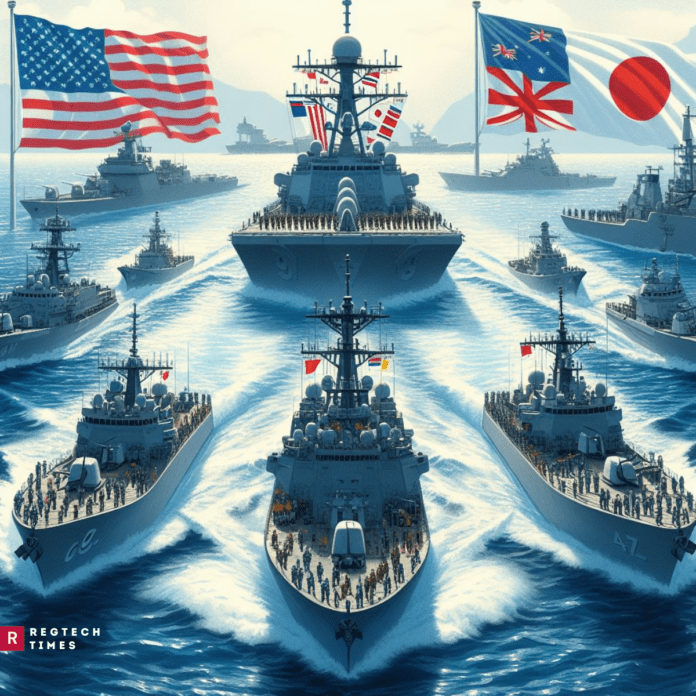The world is preparing for a critical moment as tensions in the South China Sea, a strategically important waterway for international trade, continue to rise. The United States, Japan, Australia, and the Philippines have united in their response to China’s recent acts of aggression in the disputed region. These countries have announced preparations to perform cooperative naval exercises to preserve freedom of navigation and the rule of law as a display of unity. This extraordinary show of cooperation highlights the determination of all parties to maintain peace and stability in the Indo-Pacific region and reflects the rising worry over China’s provocative actions.
Overview of South China sea
Geopolitical tensions abound in the South China Sea as a result of overlapping territorial claims, especially those made by China, which disputes a large portion of the region with its divisive “nine-dash line.” China has persisted in asserting its authority by building artificial islands and deploying military forces, despite an international arbitration verdict in 2016 that invalidated its historical claims. This has caused diplomatic tensions and sporadic military standoffs. A concerted effort to preserve international law and freedom of navigation in the area is indicated by recent combined military drills including the US, Japan, Australia, and the Philippines.
However, conflicting interests and continuing maritime incidents have impeded diplomatic attempts to defuse tensions, including talks for a Code of Conduct between China and ASEAN. The South China Sea plays a crucial role in shaping regional dynamics and global security concerns because of its strategic importance as a major maritime trade route and a focus point for great power conflict.
Rising tension and need for unity
A concerted reaction to China’s maritime assertiveness is urgently needed, as evidenced by recent instances such as skirmishes between Chinese and Philippine warships. The decision to hold combined military exercises is a united front against provocative actions and a defense of the rules-based system in the South China Sea. By coming together, the United States, Japan, Australia, and the Philippines send a clear message that they stand united in their commitment to maintaining peace and stability in the region.
The combined forces of the participating nations will conduct a series of exercises aimed at improving interoperability and cooperation on April 7 as part of the joint naval and air drills. Among other things, anti-submarine warfare training will demonstrate the combined forces’ strategic prowess and ability to counter maritime threats. Through their ability to collaborate harmoniously, the participating countries underline their common dedication to regional security.
Reaffirming International Law
Reaffirming the 2016 international arbitration decision that disqualified China’s sweeping territorial claims in the South China Sea is a key component of the joint strategy. The participating countries are steadfast in their support of the arbitrator’s decision and the fundamentals of international law, notwithstanding China’s rejection of the verdict. They aim to counteract attempts to impose their will and change the status quo unilaterally by adhering to these values.
As a final point, the cooperative naval exercises offer optimism for regional security while tensions in the South China Sea remain high. The United States, Japan, Australia, and the Philippines send a strong message of deterrence to those attempting to disturb the peace by uniting against aggression and defending the rule of law. They are paving the way for a future in which collaboration prevails over conflict and the Indo-Pacific area continues to be open and free for everyone as they go forward with their combined efforts.


